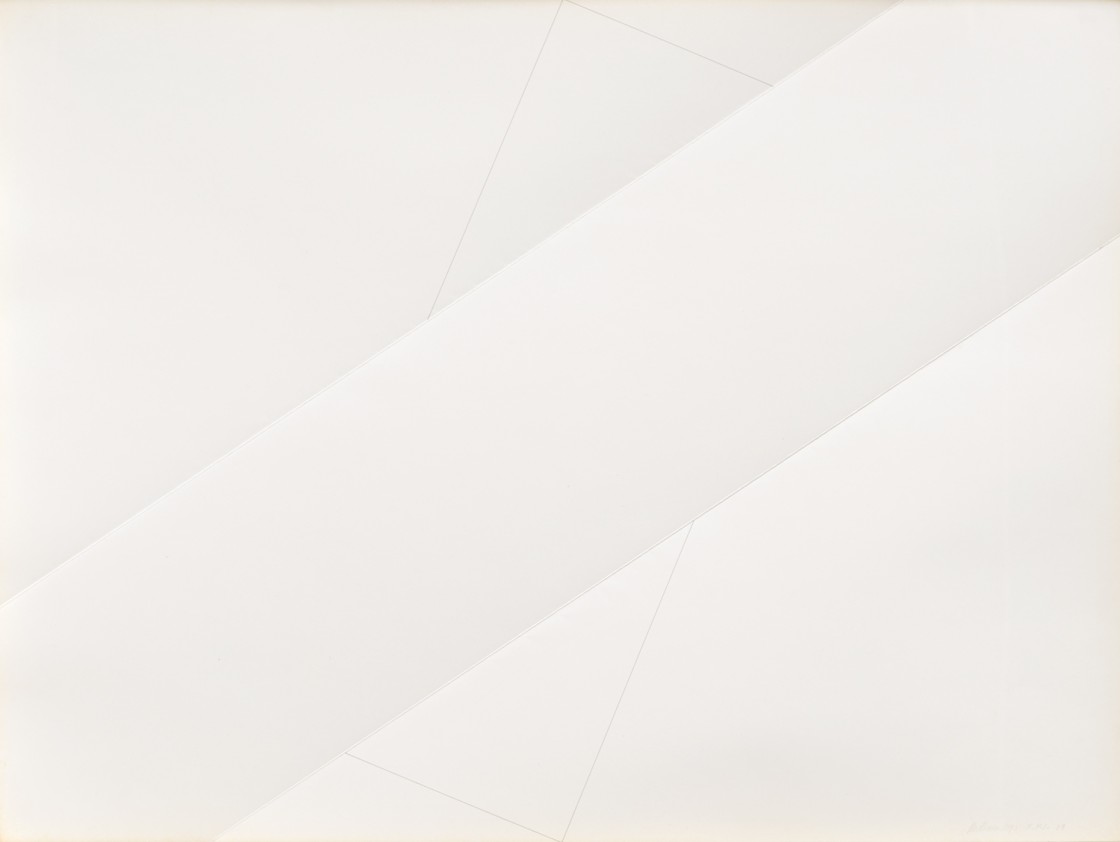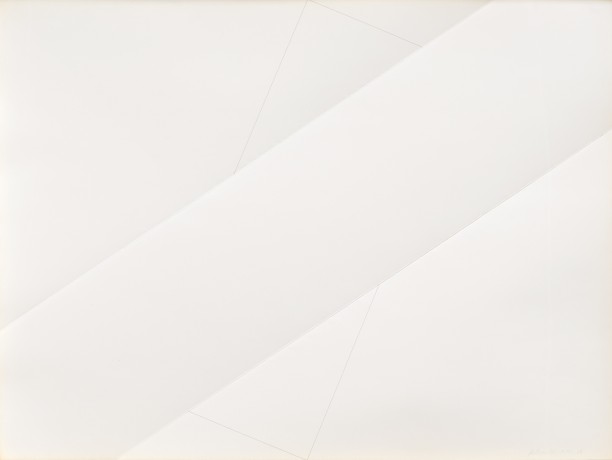F.P.I. 19
1973

-
Medium
Pen on folded paper
-
Dimensions
Frame (wood): 33 3/4 x 43 3/4 x 1 1/2 in. (85.73 x 111.13 x 3.81 cm)
Paper: 29 x 40 in. (73.66 x 101.6 cm) -
Credit
The Museum of Contemporary Art, Los Angeles
Gift of Daniel Weinberg -
Accession number
86.4
-
Object label
In the early 1970s Dorothea Rockburne set herself the task of making drawings “based on information contained within the paper and not on any other information.” Paper is typically regarded as a passive support on which a work of art is made. But in F.P.I. 19 the paper actively generated some of its own marks as Rockburne folded it, resulting in linelike creases. Rockburne’s interest in producing drawing that “acts upon itself” was rooted in her study of topology under mathematician Max Dehn at Black Mountain College. Topology is the study of shapes and spaces that are preserved or remain continuous even when they are deformed through stretching, bending, or twisting. F.P.I. 19 explores the geometry of a piece of paper, treating it as an object with a front, a back, and depth.
Rockburne studied at Black Mountain College from 1950 to 1955.
